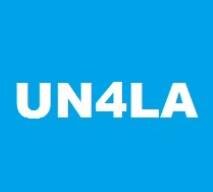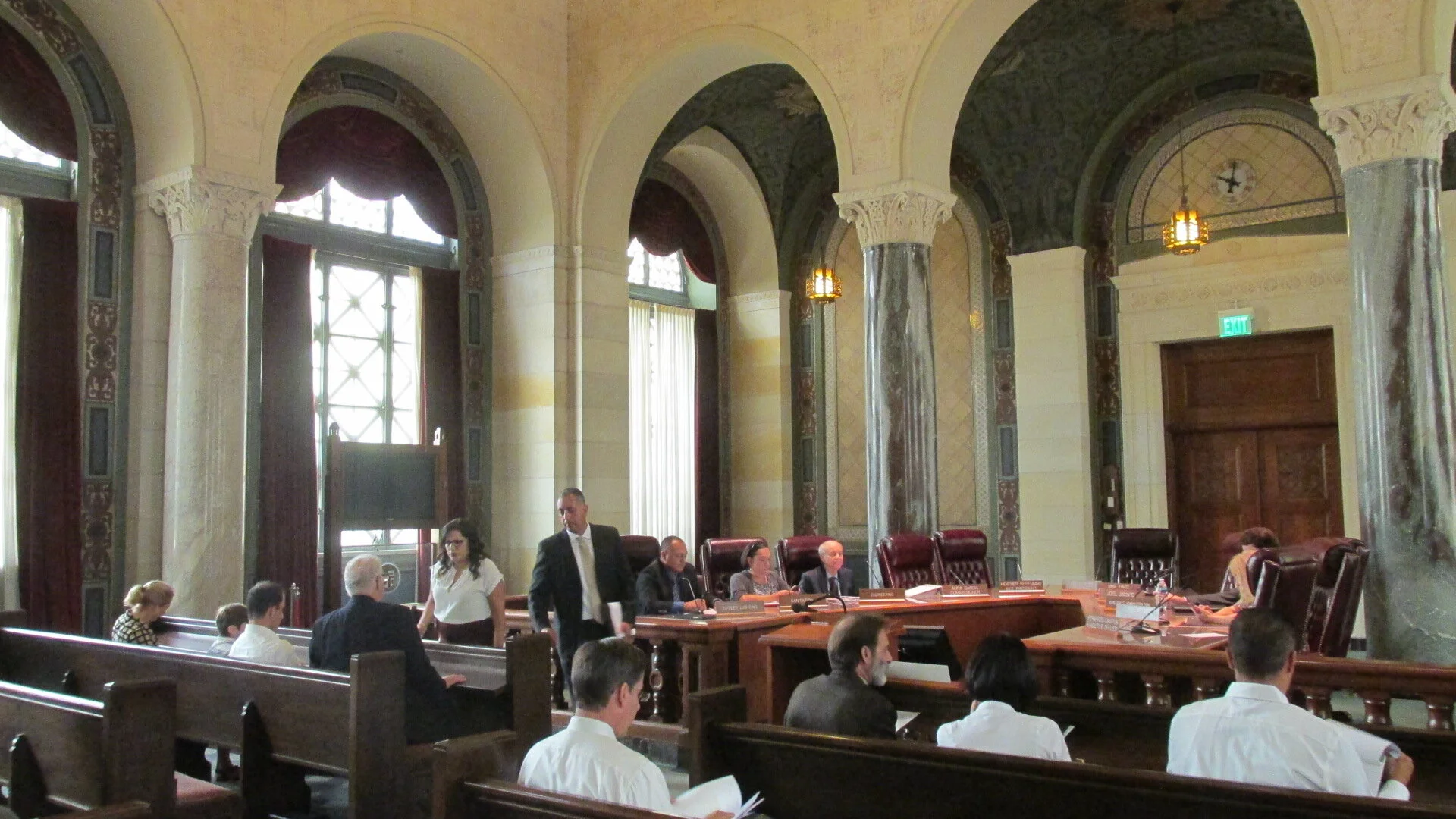UN4LA News - June 2021
A monthly newsletter published by United Neighborhoods for Los Angeles.
UN4LA's mission is to bring communities together to plan for a sustainable future. Growth must be shaped by community engagement, not developer dollars.
PROCESSES & PROCEDURES: BETTER PLANNING OR MORE PROFITEERING?
The City of LA's re-write of the Zoning Code continues to move forward, albeit in a confusing, piecemeal fashion. On June 1, the Planning & Land Use Management (PLUM) Committee voted to recommend approval of the Processes & Procedures Ordinance, which is actually just one chapter (Chapter 13, Administration) of the proposed New Zoning Code. According to the Department of City Planning, the Ordinance is, "One key component of a larger effort to comprehensively revise the City's Zoning Code to become more responsive and accessible to the public." But some members of the public who have studied the Ordinance believe that it actually does the opposite. To learn more, follow the link below.
Processes & Procedures: Better Planning or More Profiteering?
SPECIAL C.P.C. MEETING FOR DOWNTOWN COMMUNITY PLAN
And speaking of the New Zoning Code (NZC), it’s on the agenda for a special meeting of the City Planning Commission (CPC) on June 17, though as noted above, the rollout of the Code is taking place in a bizarre, piecemeal fashion. The meeting is actually being held to consider the Downtown Community Plan Update, and City Planning is asking the CPC to adopt the NZC for the Downtown area only. When asked about the NZC’s rollout in recent years, City Planning staff has said that it would be applied to new community plans as they were adopted, until finally it covered the entire City of LA. But strangely, the language used in the agenda states that the NZC “could ultimately be used Citywide”. The ambiguity of the language is troubling. Does this mean that if the NZC is approved is part of the Downtown Update, City Planning could apply it to other areas at their discretion?
The rush to approve the Downtown Community Plan at a special meeting raises some serious questions, especially since there’s a whole slew of associated actions that could have major consequences for the area’s future, and for the future of LA. In the first place, the new Downtown Community Plan Area is being formed through the merger of two existing Community Plan Areas, Central City and Central City North, and this will require a General Plan Amendment. Other requested actions include:
Amending the Citywide General Plan Framework Element to identify new Land Use Designations available Citywide
Amending the Mobility Plan to reclassify selected streets and “Enhanced Networks”
Amending the River Improvement Overlay (RIO) District Ordinance
And as if all that wasn’t enough to absorb, the City is giving interested parties a whole nine days to read through the 5,000+ page Recommendation Report.
Here’s the link to the agenda. Have fun.
Special Meeting of the City Planning Commission, June 17, 2021
A MIXED MONTH FOR PRESERVATION IN L.A.
There was good news and bad news on the preservation front in May. On Tuesday, May 4, the Planning & Land Use Management (PLUM) Committee considered two nominations for Historic Cultural Monument (HCM) designation, Taix Restaurant in Echo Park and the International Institute in Boyle Heights. Let’s start with the bad news….
The Committee did vote to unanimously support an amended proposal for Taix, but the key word here is "amended". Last year a preservation group had nominated the restaurant for HCM designation, and the Cultural Heritage Commission (CHC) recommended approval on the grounds that it “exemplifies significant contributions to the broad cultural, economic or social history of the [...] community”. Having opened in 1927, and been at its current location since 1962, Taix has been a favorite of Angelenos for decades. But at the PLUM meeting, Councilmember Mitch O'Farrell presented a proposal to limit the HCM designation to a couple of signs and a wood bar top, excluding the actual building. (Developer Holland Partner Group, which plans to build on the site, had previously made the same proposal, and it was rejected by the CHC.)
In spite of the Cultural Heritage Commission's recommendation, the PLUM Committee embraced O'Farrell's plan. Preservationists weren't just disappointed, they were shocked. This isn't just a matter of losing a historic building. According the LA Conservancy , PLUM's action, "[N]ot only dismisses Taix as a historic resource but greatly undermines the City's Historic-Cultural Monument (HCM) program and sets a dangerous precedent. HCM designation is tied to historic buildings and places, not building fragments and salvage. The Conservancy believes this action is problematic on numerous levels for larger preservation efforts throughout Los Angeles."
Moving on to the good news, at the same meeting the PLUM Committee voted to recommend HCM designation for the International Institute, a fixture in Boyle Heights since 1914. The Spanish Colonial Revival building that now stands on the site was completed in 1932. For decades the International Institute served as a gathering place for the many immigrant communities that lived in Boyle Heights, helping to foster cross-cultural understanding. The nomination was presented by Boyle Heights Community Partners.
PUBLIC WORKS APPROVES DEEPLY FLAWED E.I.R. FOR SIDEWALK REPAIR PROGRAM
On May 14, the Board of Public Works voted unanimously to recommend that the LA City Council approve the Final Environmental Impact Report (FEIR) for the City's Sidewalk Repair Program. While UN4LA strongly supports the City's efforts to fix its sidewalks, the EIR is deeply flawed, failing by a large margin to account for the Program's impacts on our urban forest. Numerous groups and individuals commented on the EIR, and they found many issues that concerned them, including the following:
It doesn't use the most recent available data on urban forest cover.
It assumes that trees grow to full maturity in 15 years, but doesn't provide evidence to support this assumption.
It assumes an improbably low mortality rate for newly planted trees
It offers the City's current tree maintenance policies as an example of "best practices", in spite of the fact that a recent report found that LA was trailing far behind other cities in achievement of a sustainable urban forest.
The Sidewalk Repair Program will go to the City Council next, where approval is almost certain. Again, sidewalks are necessary infrastructure, and we must maintain them properly, but the urban forest is also necessary infrastructure. It cleans the air we breathe, promotes groundwater recharge, and cools our communities, an especially important benefit in view of the fact that LA is growing warmer. LA's urban forest is already facing serious challenges. Approving the FEIR without addressing its deficiencies will only cause further damage to our ecosystems.
WHO SHOULD WIELD PLANNING POWER, THE STATE OR THE CITY?
In recent years the State legislature has debated a number of bills aimed at asserting State control over local zoning. Assemblymember Al Muratsuchi wants to take things in the opposite direction. In March he introduced ACA 7, a proposal for a ballot measure that would amend the California Constitution to ensure local land use authority would prevail over conflicting state laws. In the text of the bill, Muratsuchi asks the Legislature to make the following findings:
The Legislature cannot properly assess the impacts upon each community of sweeping land use rules and zoning regulations that apply across the state and, as a result, do great harm to many local communities with differing circumstances and concerns.
Gentrification of housing adjacent to public transportation will reduce or eliminate the availability of very low income housing near public transit.
While these may seem like common sense observations to many Angelenos, there are those in Sacramento who continue to insist that only the State can solve California’s housing woes, and that any solution must involve mandatory upzoning. To read the full bill, click on the link below.
ACA-7: Local Government, Police Power, Municipal Affairs, Land Use and Zoning

